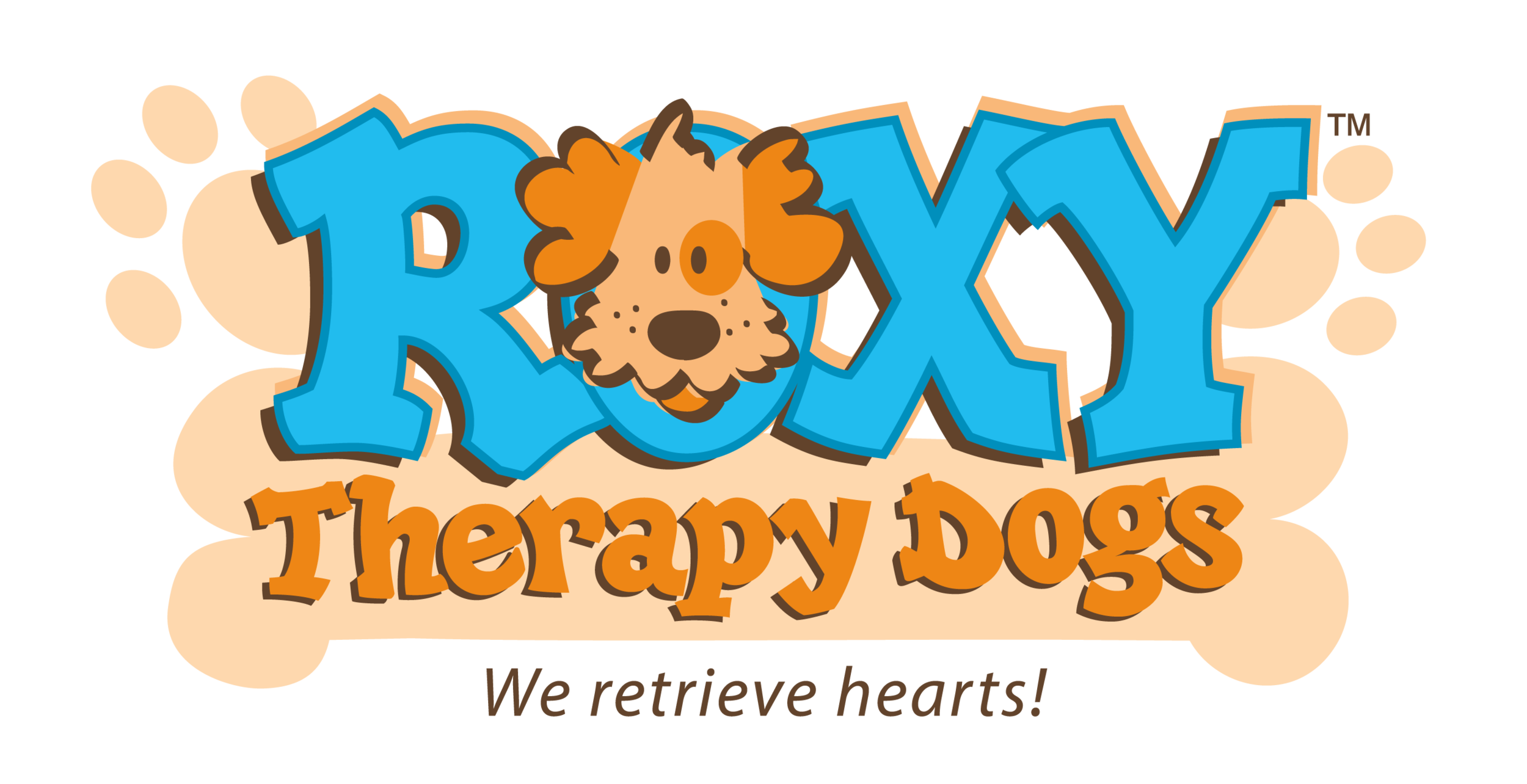What Happens on a Therapy Dog Visit?
Getting Ready
Roxy Therapy Dog bandana.
Preparation for Roxy™ therapy visits begins before we go to any location. Our therapy dogs are always well-groomed to be sure they look and smell clean and are safe to touch. Our dogs wear recognizable orange Roxy ID vests or bandanas. These vests identify our teams as safe, certified, insured and highly skilled Roxy™ Therapy Dogs. Putting on their Roxy "uniform" also lets the dogs know that they are “working.”
Meeting Our Escort
At schools and in healthcare settings, our policy is that every therapy team has an escort on visits.
Example: At the elementary schools, the team signs in at the office and waits for a student to escort them to their classroom. The classroom teacher is always present during visits.
Example: At Doylestown Health, that escort is a member of the hospital volunteer staff. With consent of the child’s parent or guardian, the therapy team will enter the child’s room. To demonstrate respect for the child and family and to give people a chance to decide whether or not it’s the right moment for a visit, we pause in the doorway, introduce ourselves as a therapy team, and ask if they would like to meet our therapy dog. The usual response is delight.
It's All About the Child
Roxy Therapy Dog teams’ first priority is to make the child feel comfortable. Upon meeting, we want to ensure that the child would like to have a visit with the dog. If the child is agreeable, then we modify the environment to maximize and facilitate interaction. In some cases, we have books or toys as part of the visit, and in others, it’s just the dog. We never ask personal or medical questions. Conversation is focused on the therapy dog and the child’s experiences with dogs, other pets or animals, or even favorite stuffed animals. Often children will ask about the therapy dog. The usual questions are “How old is the dog?” “What kind of dog is she?” “Is she a boy or a girl?” and “Is she your dog?”
Example: In the Courthouse, we approach children who are waiting to appear before the judge and ask if they would like to pet the dog. If they do, we show them how to do it and let them visit as long as they like. The conversation usually centers on questions the child has about the dog.
Example: At Doylestown Health, we ask the child, “Would you like to look at the dog or would you like to pet the dog?” Usually the child can’t wait to pet a therapy dog. If the child is clearly enjoying petting the dog, we will ask, “Would you like me to put the dog next to you in your bed?” Before the dog is carefully placed on the child’s bed, we choose a location so that the child can reach the dog while making sure the location is not near any site with medical challenges. Before placing the dog with the child, we put a towel or pillowcase on the bed, which we remove after the visit.
Providing a Happy, Comforting Visit
Buddy comforts a high school student after a community tragedy.
Our therapy dogs love people and are privileged to have the opportunity to make new friends. During the visit, the handler makes sure their therapy dog is calm and controlled throughout every interaction. In many settings, our dogs give comfort and joy to the adults who are present as well, including teachers, healthcare workers, family members, lawyers, judges, and facility staff.
Example: In healthcare settings, the visit may provide fun distraction at a time that may be frightening, lonely, and/or physically painful.
Example: In secondary schools, the visit may provide comfort and relieve stress during difficult emotional times.
Knowing When to Say Goodbye
An important part of every interaction is understanding when to end a visit. When a child says thank you, closes his or her eyes, or seems tired or wanting to do something else, we know it’s time to bring the magic elsewhere. It is also important to recognize signals that our dogs are becoming tired or disengaged as well. In order to make sure our dogs do not grow impatient or distracted, visits are typically kept to an hour or less, regardless of the setting.
Get details about Roxy’s individual programs.
Learn more about the benefits of animal assisted therapy.





